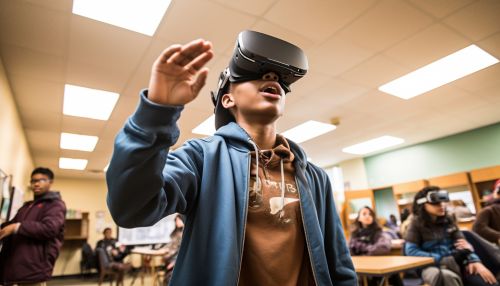Virtual Reality in Education
Introduction
Virtual reality (VR) is a simulated experience that can be similar to or completely different from the real world. In the context of education, VR has the potential to revolutionize the way we teach and learn. This article explores the application of virtual reality in education, its benefits, challenges, and future prospects.
Virtual Reality in Education
Virtual reality in education refers to the use of VR technology to create a simulated environment for teaching and learning. This immersive form of learning allows students to interact with 3D worlds and objects, providing a more engaging and interactive experience compared to traditional methods of teaching.


Benefits of Virtual Reality in Education
There are several benefits associated with the use of VR in education. These include:
- Engagement and Motivation: VR can make learning more engaging and fun, which can increase student motivation and participation.
- Immersive Learning: VR provides an immersive learning environment where students can interact with 3D objects and environments, which can enhance understanding and retention of information.
- Safe Learning Environment: VR can provide a safe environment for students to practice skills and procedures without the risk of real-world consequences.
- Collaborative Learning: VR can facilitate collaborative learning by allowing students to work together in a virtual environment.
- Personalized Learning: VR can provide personalized learning experiences tailored to the needs and abilities of each student.
Challenges of Virtual Reality in Education
Despite its potential benefits, there are several challenges associated with the use of VR in education. These include:
- Cost: The cost of VR equipment and software can be prohibitive for many schools and educational institutions.
- Technical Issues: VR technology can be prone to technical issues and glitches, which can disrupt the learning process.
- Lack of Content: There is a lack of educational content available for VR, which can limit its use in education.
- Health Concerns: Prolonged use of VR can cause health issues such as eye strain, dizziness, and nausea.
Future of Virtual Reality in Education
The future of VR in education looks promising. With advancements in technology and a growing body of research supporting its effectiveness, VR is poised to become a common tool in classrooms around the world. Future developments may include more affordable VR equipment, improved software, and a wider range of educational content.
